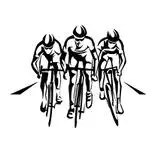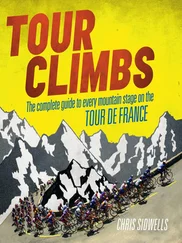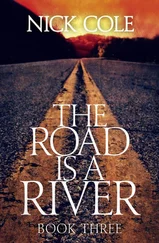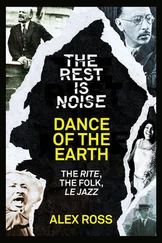THE CALL OF THE ROAD
THE HISTORY OF CYCLE ROAD RACING
Chris Sidwells
Copyright Table of Contents Cover Title Page Copyright Chapter 1: Call of the Road Chapter 2: The First Road Races Chapter 3: The Tour Is Born Chapter 4: Racing Into the Sky Chapter 5: Growing the Roots of Tradition Chapter 6: The Freelancers Chapter 7: Rainbow, Yellow, Pink and Polka-Dot Chapter 8: Women’s Road Racing Chapter 9: Behind the Iron Curtain Chapter 10: The Great British Anomaly Chapter 11: Brentry, Britain Joins Cycling’s EU Chapter 12: Time Lords and Ladies Chapter 13: D Is for Domestique Chapter 14: E Is for Echelon Chapter 15: Round the Houses Chapter 16: Aussie Roules Chapter 17: American Flyers Chapter 18: The Greatest Chapter 19: Dark Side of the Road Index Acknowledgements About the Publisher
William Collins
An imprint of HarperCollins Publishers
1 London Bridge Street
London SE1 9GF
WilliamCollinsBooks.com
This eBook first published in the United Kingdom by William Collins in 2018
Text © Chris Sidwells, 2018
Photographs © individual copyright holders
Cover image © Roger Viollet/Getty Images
The author asserts the moral right to be
identified as the author of this work.
A catalogue record for this book is
available from the British Library.
All rights reserved under International and Pan-American Copyright Conventions. By payment of the required fees, you have been granted the non-exclusive, non-transferable right to access and read the text of this e-book on-screen. No part of this text may be reproduced, transmitted, down-loaded, decompiled, reverse engineered, or stored in or introduced into any information storage and retrieval system, in any form or by any means, whether electronic or mechanical, now known or hereinafter invented, without the express written permission of HarperCollins.
Source ISBN: 978-0-00-822077-8
eBook Edition © June 2018 ISBN: 978-0-00-822078-5
Version: 2018-06-18
Table of Contents
Cover
Title Page THE CALL OF THE ROAD THE HISTORY OF CYCLE ROAD RACING Chris Sidwells
Copyright
Chapter 1: Call of the Road
Chapter 2: The First Road Races
Chapter 3: The Tour Is Born
Chapter 4: Racing Into the Sky
Chapter 5: Growing the Roots of Tradition
Chapter 6: The Freelancers
Chapter 7: Rainbow, Yellow, Pink and Polka-Dot
Chapter 8: Women’s Road Racing
Chapter 9: Behind the Iron Curtain
Chapter 10: The Great British Anomaly
Chapter 11: Brentry, Britain Joins Cycling’s EU
Chapter 12: Time Lords and Ladies
Chapter 13: D Is for Domestique
Chapter 14: E Is for Echelon
Chapter 15: Round the Houses
Chapter 16: Aussie Roules
Chapter 17: American Flyers
Chapter 18: The Greatest
Chapter 19: Dark Side of the Road
Index
Acknowledgements
About the Publisher

A road race is many things. It includes many aspects of life, but magnified; a maelstrom of ambitions, plans, desire, cooperation and treachery. A road race ebbs and flows through the countryside like a living thing, a kaleidoscope of colour, a visceral mass of muscle and machine, a chess game played on wheels. And it doesn’t matter what level: whether it’s the Tour de France or evening league, road races share the same basic qualities. Only speed, distance, stakes and the sophistication of the game are different.
Road races are battles, pure battles where social norms are replaced by personal or cohort needs. Basic needs like food and drink to re-fuel and shelter to save energy, and higher needs like peer approval, money, victory and admiration. It’s rare to experience physical battles in everyday life, and on that level the fight to succeed brings out something primitive, making road racing wonderful to experience and wonderful to watch.
But the best professionals raise road racing to an art; the art of warfare maybe, the art of a hunter perhaps, but still art and glorious to behold and appreciate. Especially since road racing is not played out in stadiums or on pitches, but on incredible natural canvases. Some are stark, set on the cobblestone roads and brutish hills of northern Europe. Others are stunning, like races in the great mountain ranges of Italy, France and Spain. But all are beautiful in their unique way.
There are single-day road races and stage races. Some single-day races have more history or more notable terrain, and they are called the classics. Of the classics five are the biggest and the best, and they are known as the ‘monuments’ of cycling. Stage races are at least two or three days long, most are around one week, but the biggest stage races last for three weeks. They are the Grand Tours: the Giro d’Italia, the Vuelta a España, and the biggest and oldest of them all, the Tour de France.
The Tour de France is not just the biggest bike race in the world, it’s the biggest annual sports event in the world, only ever surpassed by football’s World Cup and the Olympic Games. Figures from 2011 show that the Tour de France, or simply the Tour as it’s referred to in cycling, was covered by seventy radio stations, four thousand newspapers and press agencies, and seventy websites, who between them sent 2,300 journalists from thirty-five countries to the race. The Tour de France website, www.letour.fr had 14 million unique visitors that year. Over 100 TV channels broadcast the race to 190 countries in 2011, sixty of them receiving live pictures. And that’s just the media coverage, which has grown since 2011; the Tour de France has a truly worldwide audience today.
The number of roadside spectators is harder to gauge, but the Tour organisers Amaury Sport Organisation (ASO) reckon that a staggering 12 to 15 million people watch the race pass by at some point each year. And that’s one of the big attractions of road racing: it goes to the places where people live, it comes down their roads and past their houses. Still, many spectators want to see the race on a famous mountain climb, and they must either walk or bike there on the day of the stage, or they must drive there two or three days beforehand to get any chance of finding a place to park. Many camp on the mountainside, turning their visit into a holiday.
By the time the race gets there the crowds on mountain roads are huge. Police estimated that half a million people stood on Alpe d’Huez to watch a time trial stage in 2004. The atmosphere is always electric and often a little bit mad. Some fans wear bizarre costumes, and so many spill out onto the road that the race leaders often face a wall of hysterical humanity, which parts just ahead of them, leaving only the narrowest gaps to ride through. It’s an incredible sight, and unforgettable to be part of. So let’s look at a typical mountain stage of the Tour de France.
The race fills almost any place where it starts or finishes. Parking anywhere near the start is impossible, so planning ahead is vital if you are to see anything. The focus is the Village de Départ, a temporary structure erected by a travelling team, then taken down as soon as the race leaves town, and transported to wherever it’s needed next.
In Tours gone by everybody had access to all areas, but the race has outgrown the charming informality it once had. Riders, race officials, accredited media and VIPs are the only people allowed in the Village now. Everybody else stands behind barriers, people-watching and star-spotting, and there are plenty of both to see. Old champions and former team-mates meet for a coffee in the Village, where they gossip about the old days; celebrities are shown around by sponsors or race officials, while members of the media pretend to check their smart- phones but are continually looking for somebody, anybody, to interview. They don’t find many current riders, just the few who are sent out by their teams to keep the press happy.
Читать дальше













